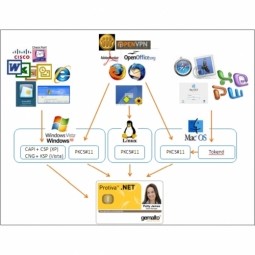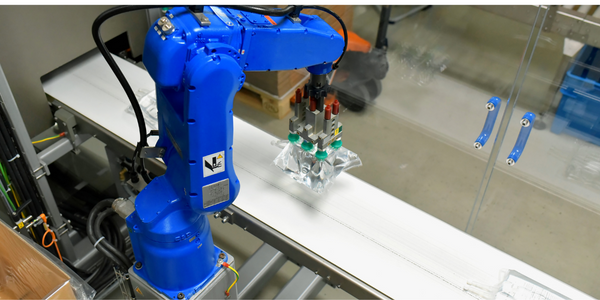Download PDF
Transforming Supply Chain Management for a Global Cosmetics Manufacturer
Technology Category
- Functional Applications - Manufacturing Execution Systems (MES)
- Platform as a Service (PaaS) - Application Development Platforms
Applicable Industries
- Life Sciences
Applicable Functions
- Logistics & Transportation
Use Cases
- Additive Manufacturing
- Demand Planning & Forecasting
The Challenge
The customer, a multibillion-dollar global manufacturer of skin care, makeup, fragrance, and hair care products, was facing significant challenges in its supply and demand planning activities. These activities were heavily reliant on Excel and manual processes, which depended largely on the personal knowledge of each planner. The company lacked master production planning capabilities focusing on operational and strategic horizons. The process of pulling a consolidated demand picture was difficult and time-consuming due to the frequent need for manual interventions to estimate the impact of promotions, marketing, and new product introductions. The supply planning/scheduling was primarily a sequential planning process where each stage of the manufacturing network was planned one after the other, and material constraints were not integrated. Furthermore, there was a lack of inclusion of promotions and product launches in the demand forecasting process.
About The Customer
The customer is a multibillion-dollar global manufacturer of skin care, makeup, fragrance, and hair care products. They serve 150 markets worldwide and are known for their iconic brands. Their supply and demand planning activities were previously heavily reliant on manual processes and Excel, with no master production planning capabilities focusing on operational and strategic horizons. The company faced difficulties in consolidating a demand picture due to the frequent need for manual interventions to estimate the impact of promotions, marketing, and new product introductions.
The Solution
The company adopted o9's cloud-native platform to overcome these challenges. The platform provided full visibility over their demand picture, automating the process and reducing the need for manual interventions. It enabled a concurrent material and capacity constrained plan for both manufacturing and distribution, ensuring an integrated, more feasible, and better-executed plan. The platform also allowed for the inclusion of new product launch calendars directly on it, providing a 360-degree view of the forecast in units and dollars, considering internal and external drivers of demand. The Enterprise Knowledge Graph was used to build demand and supply-knowledge models with master production scheduling. This allowed for running all key planning processes across operational time horizons between 2 and 12 months in a single integrated and responsive platform, replacing the previous system, SAP APO.
Operational Impact
Quantitative Benefit
Related Case Studies.

Case Study
Corporate Identity Solution Adds Convenience to Beckman Coulter
Beckman Coulter wanted to implement a single factor solution for physical and remote logical access to corporate network. Bechman Coulter's users were carrying smart card badges for doors, but also needed a one-time password token to access to our corporate network when they were not in the office. They wanted to simplify the process.

Case Study
Embracing Business Success in Real Time
· Increase control over growing Big Data to improve business decisions · Manage data for 28,000 biotechnology stockkeeping units in the fields of microbiology, molecular biology, animal cell cultures, plant tissue cultures, and lab ware for laboratory chemicals · Accelerate report generation and analysis with real-time data

Case Study
Flow Robotics: Scaling Up Production and Accelerating Product Development with IoT
Flow Robotics, a Danish manufacturer, developed flowbot™ ONE pipetting robots to alleviate the strain on bioanalysts in life-science laboratories and hospitals across Europe. These robots were designed to automate part of the testing process, speeding up the time it takes to produce results and reducing pressure on staff. However, the company faced challenges in scaling up production and accelerating product development. High workloads and physically challenging conditions have long been an issue for laboratory professionals. Flow Robotics estimates that around half of medical lab technicians carry out the same arm movements for at least a quarter of their working day. The American Society for Clinical Pathology reported that 85% of laboratory professionals feel burnt out; 36% struggle with inadequate staffing; and 32% face a heavy workload and pressure to complete all testing on time.

Case Study
Revolutionizing Aerospace Industry with 3D Printing: A 63% Lighter Titanium Part
GE Aviation, a renowned name in the aerospace industry, recognized the potential of 3D printing technology in transforming the sector. The primary challenge was to reduce the weight of the aerospace parts, which would directly impact the fuel costs. A lighter airplane would mean lower fuel consumption, leading to cost savings and a smaller carbon footprint. However, achieving this weight reduction without compromising the strength and functionality of the parts was a significant challenge. Traditional manufacturing methods were not able to provide the desired weight reduction while maintaining the required stiffness and strength of the parts. The challenge was to find a solution that could create strong, light, and functional aerospace parts.
Case Study
Material Intelligence at Ethicon: Sustaining Medical Device Manufacturability and Improving Patient Care
Ethicon, a world-class medical devices company, faced several challenges in its operations. The rapid selection of manufacturing materials compliant in global markets was critical to assure patients, practitioners, and purchasing organizations of the biocompatibility of their medical devices. Ensuring supply chain continuity and minimizing risks of obsolescence for medical devices due to regulatory changes were also crucial in meeting Ethicon’s ongoing commitment to maintaining patient care. Furthermore, the engineers at Ethicon were developing the next generation of medical devices and needed to access historical material data to accelerate new product development. The process of centralizing and digitalizing its materials information was a significant challenge that Ethicon needed to overcome.
Case Study
IWT's Transformation: Customizing with Efficiency in IoT
IWT, a company specializing in the design, manufacture, and installation of washing systems for the life sciences and pharmaceutical industries, faced a significant challenge in managing its wide product portfolio. The company manufactures 45 different models, 60% of which are customized to some degree. This high level of customization, combined with limited production quantities, necessitated a controlled process for managing the release of engineering changes. The goal was to achieve efficiency, reduce process time, and better coordinate production throughout the organization. The need for strict compliance in heavily regulated industries further complicated the situation. IWT's existing PLM journey with Dassault Systèmes’ SOLIDWORKS for 3D CAD and Enovia for managing CAD data and Bills of Materials (BOMs) was proving inadequate. The system had limited part classification, no workflow, and no tool to ensure data consistency. The management of non-CAD documents was also a challenge, with information often difficult to find and access.





